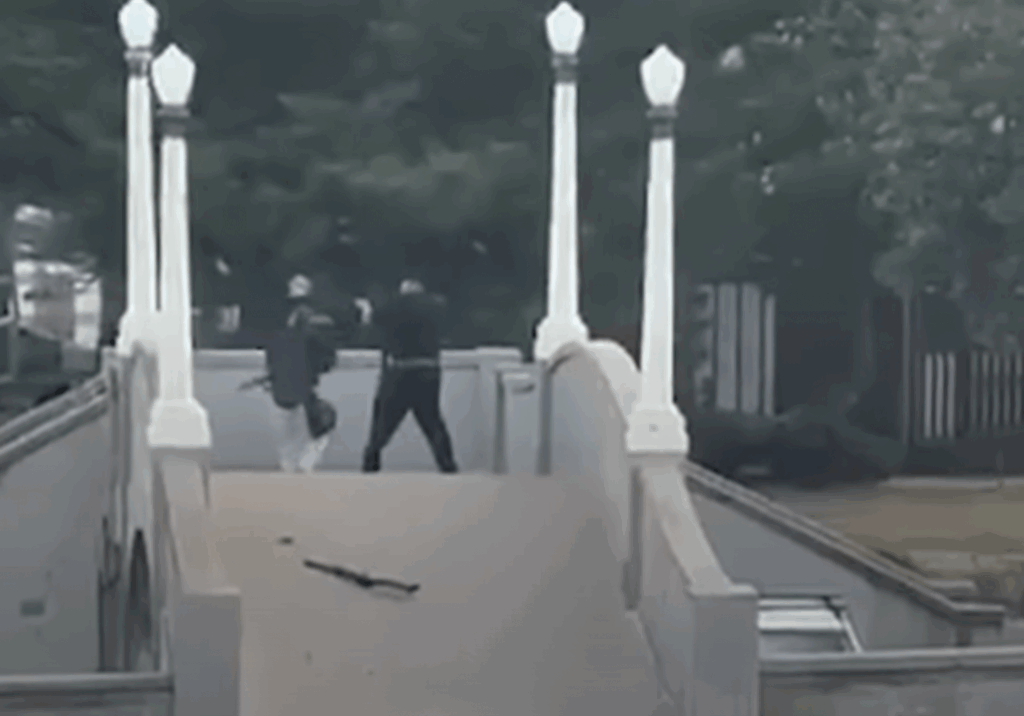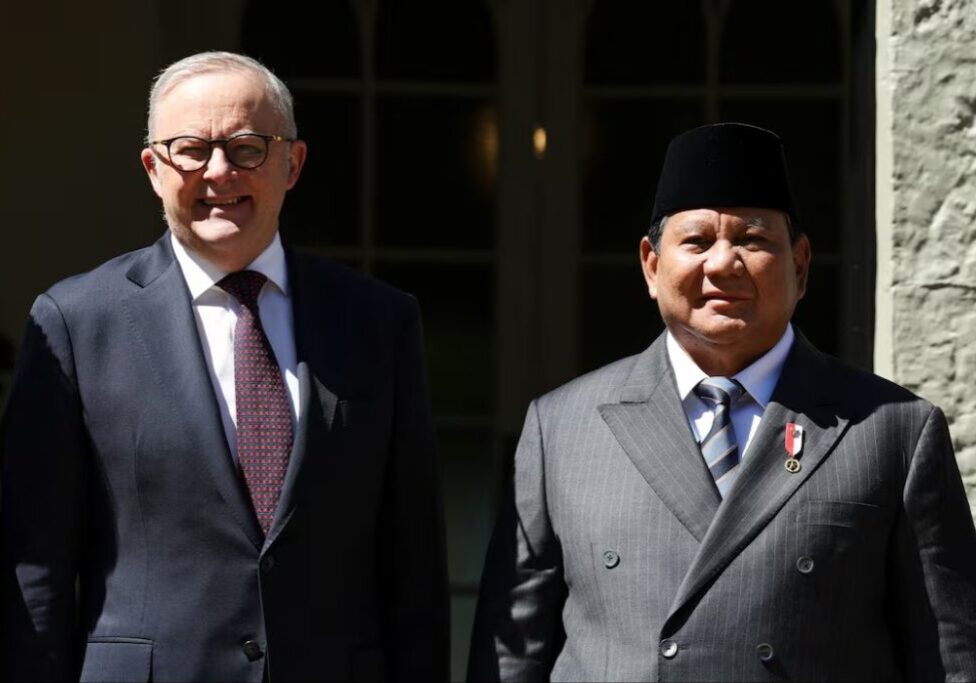Australia/Israel Review
Essay: Radical Evolution
Mar 20, 2008 | Daveed Gartenstein-Ross & Kyle Dabruzzi
By Daveed Gartenstein-Ross & Kyle Dabruzzi
Government officials, scholars, and analysts continue to debate the extent to which al-Qaeda’s central leadership remains relevant to today’s battle against terrorism. After US forces eliminated the group’s safe haven in Afghanistan in late 2001, many argued that al-Qaeda had transformed into a decentralised organisation with little vertical hierarchy, that it had become “more of an ideology than an organisation.” In the words of one analyst, al-Qaeda was seen as “a fragmented terrorist group living on the run in the caves of Afghanistan.”
This description may have been true in the months following the overthrow of the Taliban, but the notion of a scattered and ineffective al-Qaeda central leadership has been overplayed over the past several years. Many analysts have exaggerated the capabilities that the terror group’s top leaders require to remain relevant and so have overlooked the fact that even during its nadir from 2002 through 2004, al-Qaeda’s senior leadership was able to develop terrorist plots for regional nodes to execute. Now that al-Qaeda’s senior leadership has gained a safe haven in the tribal regions of Pakistan, the organisation’s power and relevance grow even greater. Today, the al-Qaeda network – with a resilient central leadership – is the most dangerous terrorist adversary that the United States faces, possessing a lethal combination of capability and, unlike Hezbollah, a demonstrated desire to carry out mass-casualty attacks on US soil.
Analysts such as Jason Burke, a reporter for London’s Observer and the author of Al-Qaeda: The True Story of Radical Islam, and Stratfor’s Peter Zeihan have underestimated the importance of al-Qaeda’s central leadership, in part because they overstate what that leadership needs to do to remain relevant. Even if the central leadership’s role is limited to connecting terrorist nodes – pairing skill sets, financing, and operatives – it can transform terrorist groups from disunited regional problems into cohesive adversaries capable of threatening Western societies.
Analysts consider terrorist networks to be centralised when there is a principal command exercising control over the network, making operational decisions, and guiding its ideology. Decisions filter from top to bottom, and levels do not mix: There is a clear separation between the leadership and lower ranking operatives. A central command joins terrorists with specific skill sets across regions, tasks smaller cells, and provides financial and logistical resources. A prime example of such a centralised structure was pre-9/11 al-Qaeda, which had a supreme leader (Osama bin Laden), a shura (consultation) council, various committees, and a cadre of lieutenants in charge of regions or cells. Although some analysts assume that youths can self-radicalise and train themselves via the internet, training camps produce the most capable terrorists. Graduates of terrorist training camps have conducted the deadliest post-9/11 attacks: in Bali, Madrid, London, Sharm el-Sheikh, and Mumbai. US officials are fortunate that both the group that plotted to bomb the John F. Kennedy airport in 2007 and the cell arrested in Miami in 2006 were untrained and apparently isolated from global jihadist networks.
While there are clear advantages for terror groups to centralisation and hierarchy, decentralisation does offer some benefits: Bureaucratic intelligence agencies have trouble keeping up with cells that are disconnected and on the move, making it almost impossible to uproot an entire decentralised network. Regional terrorist groups can also act with greater spontaneity absent the need to coordinate their operations through hierarchical channels. But on balance, centralised terrorist groups pose the greater threat. Marc Sageman, a clinical psychiatrist who previously worked for the CIA, has observed that small-scale operations “may be lethal,” but “they will not result in mass carnage, which requires coordination, skills, and resources.”
How Centralised Is al-Qaeda?
Analysts differ on the question of al-Qaeda’s centralisation. On one end of the spectrum are people such as Jason Burke. Arguing that al-Qaeda has been significantly degraded since it lost its sanctuary in Afghanistan, Burke claims that the “nearest thing to ‘al-Qaeda,’ as popularly understood, existed for a short period between 1996 and 2001. Its base had been Afghanistan, and what I had seen at Tora Bora were the final scenes of its destruction. What we have currently is a broad and diverse movement of radical Islamic militancy.”
Burke argues that there were three elements to al-Qaeda during the period from 1996 to 2001: “a hardcore, a network of co-opted groups, and an ideology.” He says that the “al-Qaeda hardcore” was comprised of bin Laden’s long-time associates as well as perhaps 100 of the world’s preeminent terrorists, who worked closely with each other and occasionally left their safe haven to run operations, but who did not always agree over ideology or tactics. The co-opted groups, Burke maintains, were “associate members of al-Qaeda” who “acted as links between the ‘al-Qaeda hardcore’ and the rest of the vast, amorphous movement of modern radical Islam.” With the US invasion of Afghanistan, he argues that both the “hardcore” and co-opted groups were defeated and scattered, and today only the ideology remains. “We are now in a ‘post-bin Laden’ phase of Islamic militancy,” in which belonging to al-Qaeda is a matter of adherence to its ideology, and nothing more. This is an assessment with which Jerrold Post, a founding director of the CIA’s Centre for the Analysis of Personality and Political Behaviour, agrees. This view has persisted well into 2007. Stratfor’s Peter Zeihan argued:
[W]e will be hearing from dozens of “al-Qaedas” in the years to come. Luckily, links between these new groups and their erstwhile sponsor are limited mostly to rhetoric. There might be a few thousand people out there claiming to be al-Qaeda members, but the real al-Qaeda does not exercise any control over them. They are not coordinated in their operations or even working toward a common goal. And while many of these new al-Qaedas might be competent militant groups, they lack the combination of strategic vision and obsession with security that ultimately allowed the original al-Qaeda to move mountains… The United States is now waging a war against jihadism as a phenomenon, rather than against any specific transnational, jihadist movement.
At the other end of the spectrum is Peter Bergen, the author of two books about bin Laden and his terror network. Bergen argues that al-Qaeda’s leadership has regrouped in the border region between Afghanistan and Pakistan and has established new terrorist training camps in Pakistan’s Federally Administered Tribal Areas. Al-Qaeda’s propaganda campaign is expanding, as are its affiliations with regional terrorist groups. For example, the Algeria-based Groupe Salafiste pour la Predication et le Combat (Salafist Group for Preaching and Combat, GSPC) recently changed its name to al-Qaeda in the Islamic Maghreb, signaling its incorporation into al-Qaeda’s global network. Since Jan. 2005, some forty different organisations in countries that include Afghanistan, Egypt, Iraq, Lebanon, Morocco, Pakistan, Saudi Arabia, Syria, and Yemen “have announced their formation and pledged allegiance to bin Laden, al-Qaeda, and their strategic objectives.” While the April 2006 US National Intelligence Estimate assessed that “the global jihadist movement is decentralised, lacks a coherent strategy, and is becoming more diffuse,” the July 2007 National Intelligence Estimate supports the view that al-Qaeda “has protected or regenerated key elements of its Homeland attack capability.”
In the debate within al-Qaeda about the group’s future, most favour a strong central leadership. Abu Musab al-Suri, one of the most prolific jihadist ideologues, in recent years has argued for a decentralised combat model. In contrast, Abu Bakr Naji, another prominent jihadist ideologue, calls for a more centralised model.
Suri’s 1,600-page manifesto, The Call for Global lslamic Resistance, argues that the centralised, hierarchical model of jihadism cannot overcome the US’s technologically advanced military, and that regional security cooperation such as the alliance between Washington and Islamabad makes a hierarchical structure dangerous. He suggests that decentralisation immunises terrorist cells from detection through the capture and interrogation of members of other cells. Suri’s prescription for decentralisation would mean replacing the old training camp model with one in which fighters are trained “in homes and mobile camps.”
In contrast, Naji’s The Management of Savagery argues that once the jihadists hold territory, they should erect a governing apparatus to enforce Islamic law and provide security, food, and medical care. A high command would ensure that efforts are not needlessly duplicated and would prioritise actions against various groups or nations. Naji has carried the day within al-Qaeda’s hierarchy, especially as al-Qaeda has gained new safe havens in Pakistan.
Historical Evidence
The preference of al-Qaeda’s leadership for Naji’s approach rather than Suri’s reflects the long-standing inclination for centralisation. Bin Laden originally formed al-Qaeda to keep the vanguard of jihad alive after the defeat of the Soviet Union in Afghanistan. He maintained his Afghanistan and Pakistan training camps and established new ones. Al-Qaeda forged relationships with other, more established terrorist groups while maintaining a corporation-like structure. West Point’s Combating Terrorism Center has translated a number of documents captured during the Afghan and Iraq campaigns that the US Department of Defence has declassified from its Harmony Database. These documents depict a clear al-Qaeda hierarchy dating back to bin Laden’s residence in Sudan. One document, entitled “Interior Organisation”, delineates al-Qaeda’s hierarchical structure, from the commander and ruling council down to the organisational committees. It explains that the commander must have been a member of al-Qaeda for at least seven years, have a sufficient understanding of Islamic law and jihad, and “have operational experience from jihad.” Below the commander are a deputy who must share the same qualifications, a secretary whom the commander appoints, and then a command council. The document also enumerates five separate committees: military, political, administrative and financial, security, and surveillance.
Other documents detail duties, salaries, and even vacation time. An application to train in al-Qaeda camps inquires about the applicant’s education level, professional experience, medical history, and how much of the Koran he has memorised.
Although the US military intervention in Afghanistan devastated al-Qaeda’s safe haven, the group’s core leadership survived. Abdel Bari Atwan, editor-in-chief of the London-based al-Quds al-Arabi newspaper, wrote that US forces may have destroyed “more than 80 percent of [al-Qaeda’s] military capabilities and infrastructure, but the group’s senior leadership fled.” A few – such as Saif al-Adl, Saad bin Laden, and Sulaiman Abu Ghaith – fled to Iran, but most relocated to Pakistan.
Soon after, al-Qaeda regional nodes took the lead in operations. On Oct. 8, 2002, two Kuwaitis linked to al-Qaeda opened fire on US marines, killing one. Then, on Oct. 12, Indonesia’s Jemaah Islamiyah killed 202 people in a nightclub bombing in Bali. On Oct. 23, Chechen terrorists seized a Moscow theatre packed with 850 people. The March 2003 capture of Khalid Sheikh Mohammad, al-Qaeda’s principal operations commander and chief architect of the 9/11 attacks, set back the reassertion of al-Qaeda’s central leadership. Over the next year, regional attacks continued. A March 11, 2004 attack on commuter trains in Madrid killed almost 200 people and sabotaged the reelection bid of the then-Spanish Premier Jose Maria Aznar’s Popular Party. In early September 2004, Chechen terrorists killed 300 civilians, including 180 children, in the southern Russian town of Beslan. On July 7, 2005, four British-born Pakistani Muslim suicide bombers blew themselves up on London’s public transit system during rush hour, killing 52.
With the benefit of hindsight, it is clear that in this period analysts and media commentators underestimated the extent to which al-Qaeda’s central leadership remained able to organise terror attacks. Al-Qaeda’s leadership formulated the Madrid plot, even though a regional node implemented the operation: The police traced the mobile phone detonators used in that plot to Jamal Zougam, a Moroccan who owned a cell phone shop in Madrid. Spanish authorities monitored a call between Zougam and Imad Eddin Barakat Yarkus, the now-jailed head of al-Qaeda’s node in Spain. The ringleader of the Madrid cell, Sarhane Ben Abdelmajid Fakhet, was friendly with senior al-Qaeda operative Amer Azizi. But the most salient connection is the fact that the Centre of Mujahideen Services, an internal al-Qaeda “think tank” and linear descendant of the Maktab al-Khidmat (Bureau of Services), a non-governmental organisation formed in the mid-1980s to provide services during the Afghan-Soviet war, developed the political strategy behind the attack. The Centre of Mujahideen Services, formed to provide the same kind of services to Iraqi mujahideen that Maktab al-Khidmat provided to Afghan fighters, published a book entitled Iraq al-Jihad, which concluded that “the Spanish government will not endure two or three attacks” and argued that a coordinated terrorist assault could turn the Spanish public against the government, forcing it to withdraw.
Al-Qaeda’s senior leadership also played a crucial role in the July 7, 2005 attacks on London’s transit system. British police reports were hesitant to link the bombers to al-Qaeda, believing the terror cell to be autonomous and self-actuating. But as the official account of the 7/7 attacks hit the British press, terrorism analysts Dan Darling and Steve Schippert enumerated a number of problems with the early conclusion that the broader al-Qaeda network was largely irrelevant to the London cell that executed the bombings. First, they noted connections between cell leader Muhammad Sidique Khan and Riduan Isamuddin, mastermind of the Bali bombings. Mohammed Junaid Babar, a Pakistani native living in Queens, New York, who pleaded guilty in federal court to smuggling military supplies to al-Qaeda and assisting the London bombers, had identified Khan as someone he had met at an al-Qaeda camp in Pakistan. Haroon Rashid Aswat, who helped set up an al-Qaeda training camp in Oregon, had contacted the London bombers by telephone hours before the attack. After the bombing, Khan and fellow bomber Shehzad Tanweer appeared in a video aired on the Arabic satellite channel al-Jazeera that included praise for the attacks from bin Laden and his deputy, Ayman al-Zawahiri, as well as Khan’s suicide message. It seems highly unlikely that al-Qaeda’s senior leadership would have this footage were they unconnected to the attack. Underscoring this point, al-Jazeera posted a video from Zawahiri on the one-year anniversary of the bombings claiming that Khan and Tanweer had visited an al-Qaeda camp “seeking martyrdom”.
The connections between al-Qaeda’s senior leadership and the attacks in Madrid and London demonstrate that the group’s top command was not as isolated and irrelevant during this period as some suggested. Still, it would gain more strength over time.
Al-Qaeda’s Leadership Regroups
After relocating from Afghanistan to Pakistan, al-Qaeda’s senior leadership set about revamping its operations. They tried twice, in December 2003, to kill Pakistani President Pervez Musharraf, leading him to send troops into Pakistan’s tribal areas. Al-Qaeda and allied tribes prevailed in the fight.
The 9/11 Commission concluded that to carry out catastrophic acts of terror, terrorist groups require sanctuaries that provide them with “time, space, and ability to perform competent planning and staff work” as well as “opportunities and space to recruit, train, and select operatives with the needed skills and dedication.” Al-Qaeda gained this in Pakistan with the signing of the South Waziristan accord, and later the North Waziristan accord, which signaled Musharraf’s military defeat in the campaign directed at the tribal areas. The accords provided that Pakistan’s military would not carry out air or ground strikes in the tribal areas and included a pledge that Islamabad would disband its human intelligence network there. In effect, Musharraf granted al-Qaeda a new safe haven. Three similar accords have since been signed: with the Bajaur region in March 2007, two months later with Swat, and finally with the Mohmand Agency in August 2007. With these agreements in place, the United States has seen an influx of al-Qaeda operatives and money into the tribal regions. Recent video taken in a Pakistani training camp shows a graduation ceremony of about 300 recruits for suicide missions, some of whom are allegedly bound for the United States and Europe.
Already, the safe haven in the Northwest Frontier Province has made an al-Qaeda and Taliban resurgence possible. Taliban attacks in Afghanistan increased almost immediately after the Waziristan accords were consummated. Moreover, the Aug. 10, 2006 plot to destroy ten aircraft over the Atlantic Ocean with liquid explosives signalled the resurgence of al-Qaeda’s senior leadership in its Pakistani safe haven. Although some initial reports hesitated to link the plot to al-Qaeda’s senior leadership, the evidence left little doubt.
Pakistani security sources confirmed that the plot was hatched by al-Qaeda’s “top hierarchy.” Published reports stated that high-level al-Qaeda operative Matiur Rehman “directed the British terror plot from Pakistan.” Officials believe that two suspects identified in the plot met with him in Pakistan and later received a wire transfer from Pakistan to buy airline tickets for the suicide bombers. The operatives charged with carrying out the transatlantic air plot trained in al-Qaeda’s Pakistan camps. B. Raman, the director of the Institute for Topical Studies in Chennai, India, and former head of the counterterrorism division for India’s external intelligence agency, has noted that “some of the eighteen persons of Pakistani origin detained by the British police in connection with the investigation had travelled to Pakistan after the earthquake of October, 2005” to volunteer for humanitarian efforts, but while in the relief camps, “were taken by the Jundullah, a Pakistani jihadi terrorist organisation which is close to al-Qaeda, to its training camps in the Waziristan area… of Pakistan for training.” The magnitude of the plot and the number of players involved – estimates range from 50 to 150 – are beyond what a local cell could organise without outside help.
Compounding the problem of al-Qaeda’s Pakistan refuge, the group may gain further safe havens in Somalia and Iraq. Last year, most of Somalia was conquered by the Islamic Courts Union (ICU), a group closely associated with al-Qaeda. The ICU’s rise attracted hordes of foreign fighters as well as money from established al-Qaeda financiers – leading some analysts to fear that a new Afghanistan-style safe haven was emerging. The Somali camps – perhaps 17 in all – hosted an array of jihadis from Afghanistan, Chechnya, Iraq, Pakistan, and the Arabian Peninsula. Although an Ethiopian intervention that began in Dec. 2006 pushed back many of the ICU’s advances, the group has since launched a potent insurgency.
Al-Qaeda’s senior leadership also sees Iraq as a critical battlefield. CIA Director Michael Hayden has warned that US failure there would produce “a safe haven from which” al-Qaeda would be able “to plan and conduct attacks against the West.” When US and Iraqi forces killed an al-Qaeda financier known as Muthanna in a late 2007 operation, the documents and electronic files they uncovered yielded a great deal of information about al-Qaeda’s infrastructure in Iraq. The information recovered included a list of “500 foreign terrorists being recruited by al-Qaeda” and biographies of 143 al-Qaeda fighters en route to Iraq from such countries as Algeria, Belgium, Egypt, France, Jordan, Libya, Morocco, Oman, Saudi Arabia, Syria, Tunisia, the United Kingdom and Yemen. Around the same time, the US military detained a man in Baghdad who had allegedly received approximately US$100 million from outside sympathisers to fund al-Qaeda’s operations. These incidents are indicative of al-Qaeda’s infrastructure in Iraq.
Analysts declared al-Qaeda’s central leadership defeated before it had been dealt a death blow. Its regional nodes and ambitious newcomers stepped to the fore while the group’s senior leadership fought to gain control of territory – thus helping to reinforce the idea that the senior leadership was marginalised and irrelevant. Even at the time, the fallacy of this view should have been apparent: As Bergen points out, “the existence… of al-Qaeda imitators does not prove the obsolescence of the real thing.” Now, as al-Qaeda’s vitality approaches pre-9/11 levels, many analysts still do not have their eyes on the central network – and fewer yet understand how it regained its strength after losing Afghanistan.
Even with its leadership on the run post-9/11, al-Qaeda nodes remained deadly, staging a number of significant attacks. With a new safe haven for its leadership in Pakistan as well as several open fronts, the group may be able to orchestrate even more spectacular terrorist attacks in the future.
There are many external signs that al-Qaeda is back, including its increasingly effective media operations. Al-Sahab, al-Qaeda’s media wing, disseminated 58 videos in 2006. While al-Qaeda’s regional nodes will remain terrorist forces in their own right, the senior leadership is indeed back. With a safe haven in Pakistan – and perhaps soon in other territories – the senior leadership will likely play a greater role in future plots while attempting to conceptualise and carry out an attack that will surpass 9/11. A strong central leadership makes the group more formidable and its attacks more deadly; dismissing the evidence that al-Qaeda’s leadership has regrouped will ultimately endanger Western security.
Daveed Gartenstein-Ross is the Vice-President of Research at the Foundation for Defence of Democracies, and the author of My Year Inside Radical lslam (Tarcher/Penguin, 2007). Kyle Dabruzzi is a research associate at the Foundation for Defence of Democracies. © Middle East Quarterly, reprinted by permission, all rights reserved.
Tags: Indonesia, Islamic Extremism






